mobile Ansicht, to the English Version tap the flag
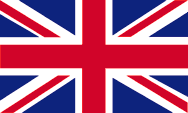

- Sultanat Lingga
- ehemaliger Malaienstaat
• Flaggen
• Bedeutung/Ursprung der Flagge
• Geschichte

bis 1818,
Flagge,
Quelle, nach: Die Welt im bunten Flaggenbild




1818–1911,
National- und Staatsflagge (an Land),
Quelle, nach: Die Welt im bunten Flaggenbild, Wikipedia (CA)



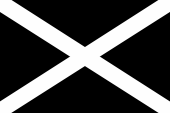
1818–1911,
Staats- und Marineflagge (zur See),
Quelle, nach: Wikipedia (CA)



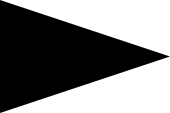
1818–1911,
Handelsflagge,
Quelle, nach: Wikipedia (CA)



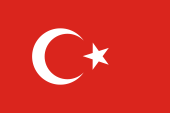
1883(?)–1911,
mögliche einzige Flagge,
Quelle, nach: Wikipedia (EN)




bis 1911,
Standarte des Sultans,
Quelle, nach: Die Welt im bunten Flaggenbild



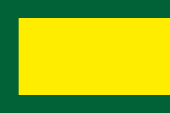
1722–1883(?),
Standarte des Vizekönigs,
Quelle, nach: Wikipedia (CA)



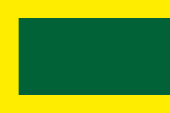
1722–1883(?),
Standarte des Erben,
Quelle, nach: Wikipedia (CA)




Das Sultanat von Lingga war bis zur Mitte des 19. Jahrhunderts einer der mächtigsten Malaienstaaten in der Region. Lingga unterwarf große Teile Malayas und verbreitete seine schwarze Flagge über den ganzen Süden der Halbinsel Malakka. Die Flaggen von Johore, Pahang und Terengganu gehen und gingen so auf die Flagge von Lingga zurück. Als Lingga immer mehr in die Abhängigkeit von den Niederlanden geriet, ergänzte das Land im Jahre 1818 – nach einem Vertrag – auf seiner schwarzen Flagge eine weiße Oberecke. Wahrscheinlich sollte so die Loyalität Linggas gegenüber den Niederlanden demonstriert werden. Wahrscheinlich stammt vom Sultanat Lingga der Brauch, als Flagge des Sultans ein weißes Tuch zu verwenden. Das ist ungewöhnlich, da in ganz Südostasien die Farbe Gelb als die Farbe gilt, die den Herrscher repräsentiert. Die Sultanate Johore, Pahang, Terengganu, Kelantan und Perak haben diese Tradition von Lingga übernommen und so verwenden deren Sultane noch heute weiße Flaggen. Die Führung des Landes wurde seit 1722 durch eine Art Dualität wahrgenommen, einerseits der Sultan, andererseits der Vizekönig (Adat). Mit dem allmählichen Niedergang des Reiches wandelte sich das Amt des Vizekönigs mehr und mehr in das eines spirituellen und religiösen Führers. Beide Funktionen waren ab 1883 mit Abdul Rahman II. in einer Person vereinigt, der erstens stark sufistisch geprägt war und der die Idee das Land dem Osmanischen Reich als politische und religiöse Schutzmacht gegen die Niederlande und Briten zu unterstellen vorantrieb. Möglichweise geht auf ihn die zuletzt überlieferte Flagge im Design des Osmanischen Reiches zurück. Am 11.02.1911 wurde Abdul Rahman II. von den Niederländern abgesetzt.
Quelle:
Die Welt im bunten Flaggenbild, Wikipedia (EN), Volker Preuß

Das Sultanat Lingga entstand wahrscheinlich im 16./17. Jahrhundert. Es dehnte sich vom Lingga-Archipel über Singapur nach Norden über die Halbinsel Malakka aus. Lingga rückte im 18./19. Jahrhundert immer mehr in den Brennpunkt kolonialer Interessen, vor allem von Seiten Großbritanniens und der Niederlande. Die Landesteile Pahang und Johore verselbstständigen sich schließlich und geraten dann unter die Herrschaft der Briten. Der Lingga-Archipel wird von den Niederländern unterworfen und deren Kolonialreich einverleibt. Das Land war zerbrochen und geteilt.
Quelle:
Atlas zur Geschichte,
Die Welt im bunten Flaggenbild


![]()

























![]()
